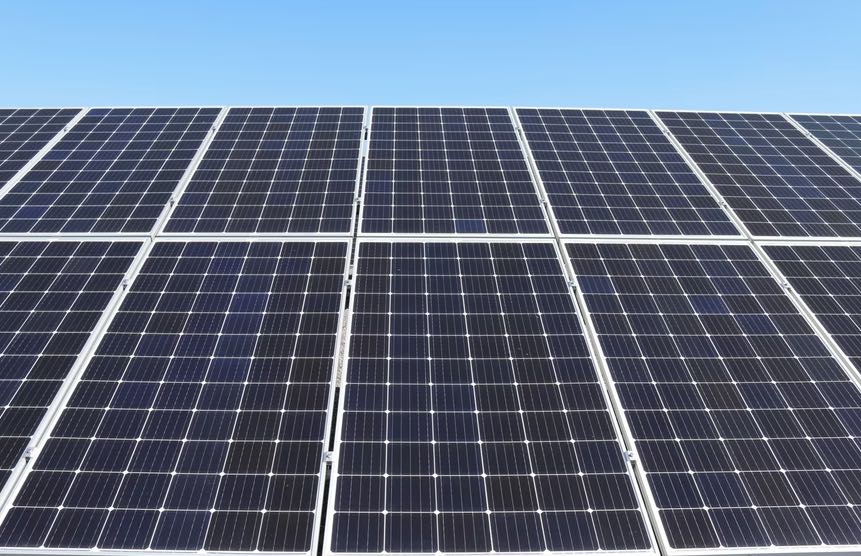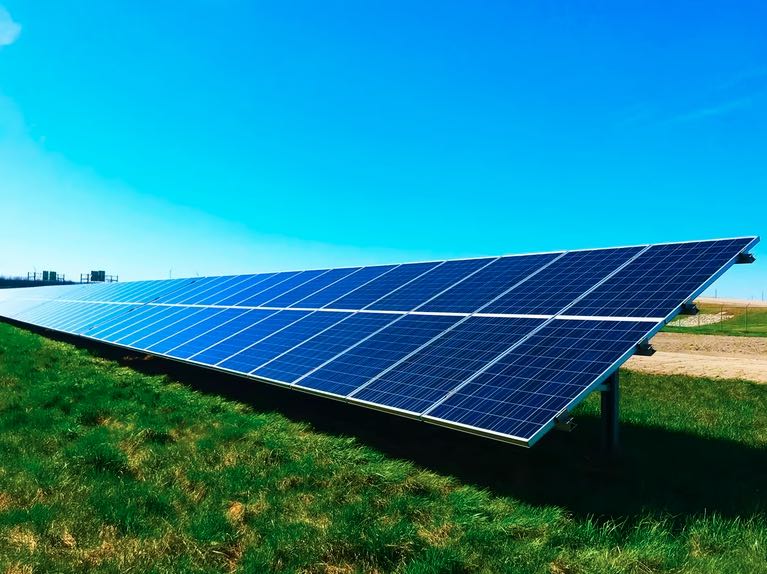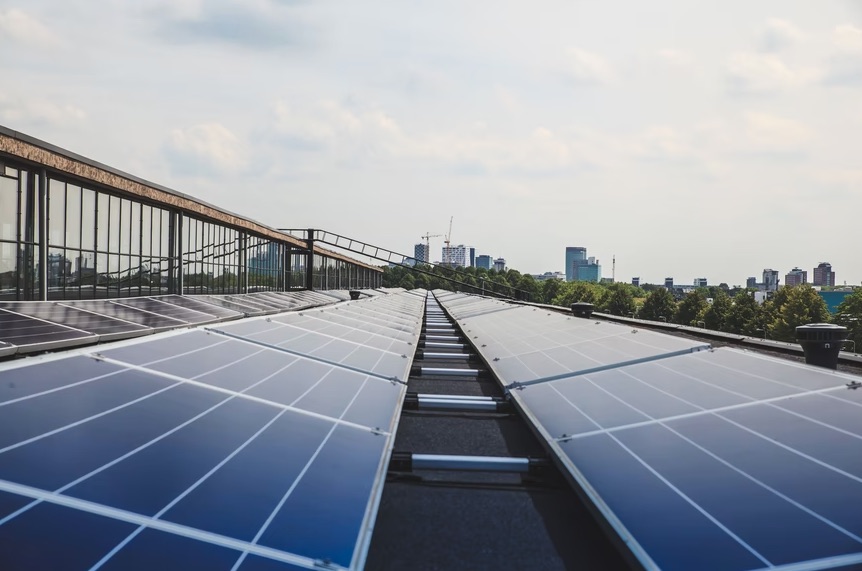Although solar panels can reduce your monthly electricity costs, you should learn more about how they function and how they are tested before making the investment.
Most of us share a common goal of preventing global warming, and we can all agree that solar energy is a promising means towards that end. But what if you are unsure of the functionality of your panels?
This blog post will help you how do you test a solar panel and troubleshoot any issues with your solar panels.
You may get a more accurate picture of your solar panels' real power production by taking the time to put them through a series of tests. Since your solar power system's output and efficiency are directly tied to the performance of your solar panels, it makes sense that many individuals do frequent tests of their solar panels.

There are a lot of moving parts in a solar panel evaluation. In particular, knowing the range of power production from the panel's highest to minimum capacity is crucial. An excessive disparity like this could indicate that insulation or wiring needs to be checked out before a new system is purchased. Physical deterioration indicators like dirt accumulation, cracks, and scratches should also be examined.
Of course, not all solar panels are the same. Installing a panel without first testing it to make sure it works as expected is a bad idea. This article will explain how to conduct a solar panel test, allowing you to determine with confidence which model is ideal for your needs.
The Importance of Regular Solar Panel Testing.
The manufacturer-stated power rating of a solar panel represents its theoretical maximum output. In reality, however, solar panels seldom experience ideal circumstances for more than a few hours daily.
The efficiency and power production of solar panels can be affected by a variety of factors, such as the number of peak sun hours in a day, shading issues, the outside temperature, the orientation of the solar panels, the geographic location of the solar panels, and the season in which the solar panels are used.
The only way to know for sure how much electricity your solar panels are producing is to have them examined by an expert. This would inform you if you need to acquire more solar panels or if you can get by with repositioning the ones you already have, and it would also help you change your expectations to be more in line with the real potential of your solar panels.
In other words, if you want to know if your solar panels are producing enough electricity to meet your needs, or if you need to reinstall them to maximise their efficiency and collect the most power from the sun, you can just check them.
Everything You Need To Know About Solar Panels
Understanding how to test a solar panel is essential if you plan to use them. After installation, you must verify that you are getting the required power by checking the output. You will receive the necessary assistance and will be able to purchase your first solar panel(s).
Get the most out of your solar panels by increasing their efficiency. You'll need as high a capacity factor as possible. Before turning on the solar panels, it's a good idea to check how well they're doing in their new location.
There are two main types of electrical current: alternating current (AC) and direct current (DC). Alternating current (AC) is contrasted with direct current (DC). For low-voltage applications, such as solar panels, direct current (DC) is necessary since it flows in only one direction. Since watts is the default unit for most electrical devices, that's what you'll need to keep track of while measuring your power consumption. In order to properly evaluate the solar panels, you will need to complete a certain computation.
Wattage=Voltage.
Watts is just the product of voltage times current.
Measure the wattage and voltage of the solar panel to learn how much energy it is wasting.
How To Test Solar Panels Step By Step
A Checklist Before You Start
Determine the solar panel's maximum voltage and current capacity. These star ratings are typically located in the panel's rear. Make sure there is plenty of perfect sunlight. You won't get a reliable readout if the solar panels aren't immediately exposed to strong sunshine.
Prepare yourself by learning how to use a multimeter and take accurate readings. In order to test a charge controller, make sure the battery is not fully charged. The resistance of a completely charged battery is a sign that the battery is ready to be used.
Connecting the regulator to the battery instead of the panel could potentially cause damage to the panel. As with the battery, the solar panel must be unplugged from the regulator before the regulator can be taken off the battery.
Test your solar panels the right way; it's an essential step that often gets ignored. Surprisingly few people verify the solar panel's electricity output before installing it.

To Begin Measure Solar Panel Amperage
For this, you'll need an amp metre, a type of solar panel tester. Connect the meter's positive and negative leads to the solar panel's terminals to read its amp output. The panel needs to be exposed to full sunlight for an accurate reading.
To acquire an accurate reading, you'll need an amp metre with a higher measuring capacity than your solar panel's amp output.
You will need something called an amp metre to determine how much current your solar panel is producing. Devices like these may be found in the vehicle section of most hardware stores for a reasonable price.
Connect the meter's positive and negative prongs to the appropriate terminals on your solar panels. If you want your solar panel to get the same amount of sunshine it would in real life while you're testing it, don't move it about too much.
If you connect it to your solar panels, it will provide you with an accurate readout of the amperage you may use in your calculation.
The Next Step is to Measure Current
To proceed, you'll want a multimeter and resisters for measuring DV voltage. Once you take this reading, you'll know that current = voltage is the right equation to use.
In order to determine the current, a multimeter can be used. These tools are cheap and should be included in each solar power setup. They are sold in most auto parts stores and hardware shops.
In addition, a variable resistor box is required to ensure a precise reading. Using these tools, you may measure resistance in a variety of ways.
When you have all the necessary equipment, you may test your solar panels with a multimeter in the following ways:
- Check the back of the solar array for the junction box or converter. Take the cover off if it has one.
- Determine where the positive and negative plugs are, and double-check that you understand the difference between the two. If your solar panels aren't labelled or if you're not sure you've correctly recognised them, you should look in the manual.
- Ensure that the solar panel is getting the same amount of sunshine it would on a typical day.
- Alternating current (DC) should be selected on the multimeter. The multimeter's reading should be higher than the solar panel's recommended voltage for accurate readings.
- Taking these steps will guarantee a reliable reading, free from any interference from the multimeter itself.
- Be sure you attach the multimeter to the solar panel in a way that allows the positive and negative clips to reach their respective terminals.
- Take note of the voltage level. After getting a reading, turn off the multimeter and remove it from the solar panel.
If you follow the instructions above, the solar panel voltage you measure should be reliable. If you are checking the voltage of a relatively new solar panel in optimal lighting circumstances, it should read close to the voltage rating it was given when you bought it.
Using a Multimeter to Test a Solar Panel
A multimeter can be used to check the current and voltage of many devices, including solar panels. Different multimeters fall into one of two categories.
A switched multimeter requires the user to toggle between measurement ranges to obtain an accurate reading. To use this multimeter effectively, choose the suitable setting. A number of measurement functions are included into it. For amperage measurement, for instance, select DC Amperage. Switch to DC voltage mode for accurate voltage readings. Typically, the readings are crowded.
Multimeter with automated range selection for optimal readings. Since the auto range only measures voltage and current, the only possible modifications are between those two values. This results in generally accurate measurements.
Other than their distinction, both multimeters are equally competent at gauging the amperage and voltage of solar cells.
Step 1. Locate the converter box.
Behind the solar panel is where you'll find the converter box. The cover of the converter box must be removed after it has been located. If you take off the cover, you can inspect the wiring inside.
Step 2. Note Positive & Negative Connections
Remember the positive and bad associations. Assuming you already know which terminals are positive and which are negative, you should position your panel so that it receives as much sunshine as possible.
Step 3. Set Multimeter to DC
Make sure the voltage you're measuring is higher than the maximum volts your solar panel can handle. If your panel is rated for 20 volts, for instance, you'll need to adjust your multimeter to a higher voltage range.
You can be sure of getting a precise reading if you follow these steps. You can usually discover the voltage rating of your panel marked inside the converter box.
Step 4. Connect Alligator Clips
When using alligator clips, attach the red wire to the plus terminal. If you're finished, you can connect the black lead to the ground. After this is done, your volt metre should show an accurate reading from your panel.
Voltage output from brand-new solar panels should be quite close to their specified rating. The results of your solar panel efficiency test may be impacted by the fact that the panel is already in operation.
Standard Test Conditions (STC)
STC is the most popular standard for manufacturers to utilise when advertising their panels to consumers. The voltage and current generated by a solar panel vary with environmental factors including temperature and the amount of sunlight striking its surface. In order to fairly evaluate and compare various panels, a consistent set of testing circumstances is required.
Normal Operating Cell Temperature (NOCT)
By more accurately reflecting actual conditions, NOCT provides power ratings that are more indicative of what you can expect to see. For instance, it utilises 800 watts per square metre, which is more akin to a largely sunny day with a few clouds here and there, than the standard 1000 watts per square metre. Similarly, 20 degrees Celsius has become the new norm for temperature.
Solar Panel Open Circuit Voltage Test
How well the module is functioning can be determined by listening to its voc. It is not a measure of effectiveness or efficiency. It merely verifies the integrity of the solar cells' interconnections. It's important to remember that the panel's power output can be diminished if a weak connection fails or has a high resistance under load.
The voltage of a solar panel with no load on it is the open-circuit voltage. Simply placing a voltmeter across the leads will give you the value of Voc. The solar panel can't generate electricity because it's not hooked up to anything.
The highest voltage the solar panel can produce under Standard Test Conditions. Inverters and charge controllers have a maximum input voltage that shouldn't be exceeded, thus understanding this is helpful.
Solar Panel Short Circuit Current Test

Performing this test on a solar module over time allows one to see how much its power output has degraded. Verify that the maximum current allowed (from the panel label) does not exceed the maximum current measurement on the multimeter. Arcing is a real risk when connecting high-power panels, thus a fast connection is essential.
If possible, do the ISC Test on the single panel during daylight hours with a current of 10 amps or less.
Using solar radiation or a power metre to gauge the sun's energy is a terrific idea because the resulting current reading is proportionate to the amount of sunlight. If the value is extremely small, it can be used to correct the measurements made to arrive at an accurate power rating.
You should hook up the multimeter's leads to the panel's positive and negative terminals using the device's 10 amp setting. After accounting for changes in insolation, you shouldn't observe a value lower than -20% of the rated value.
It's possible that the details of how to evaluate solar panels are beyond your comprehension. In any case, with this analysis in hand, you may be sure that your panel will function properly. Basic knowledge is all that's required. But first, you need to learn about solar energy, solar panel output, and your specific requirements.
Second, if you are familiar with using a multimeter, you will be able to obtain a reliable reading for your panels. You should also regularly test your charge controller. When it comes to battery safety, efficiency is key. The batteries are where all the power from the solar panels will be stored.
Learn how to use a multimeter so you can test solar panels properly. Using a multimeter incorrectly could damage the solar panels, which is obviously a bad thing. Checking the panels with a multimeter is the best way to determine their quality.
Frequently Ask Questions About Solar Panels
A simple health check is to look at the colour of the lights shining on the box during daylight hours when the system's meant to be running. A green light on your inverter means your system is functioning properly. A red or orange light during daylight hours means there's a system event or fault.
Write down the voltage in volts. Then, reconnect the wires and let the solar panel charge the battery during the day. At the end of the day, measure the voltage again. You should see that the voltage of the battery has increased, indicating that it is being charged.
Based on that information, solar panel manufacturers typically offer warranties of about 25 years or more. And in the case of newer or well-built systems, panels can last for 30 years.
One Panel Failure. Solar panels are set up in a group called a lighting grid. If one panel in this group fails, none of them will work. However, replacing the faulty panel will restore power to the entire lighting grid.
The rated terminal voltage of a 12 Volt solar panel is usually around 17.0 Volts, but through the use of a regulator, this voltage is reduced to around 13 to 15 Volts as required for battery charging. Solar panel output is affected by the cell operating temperature.

